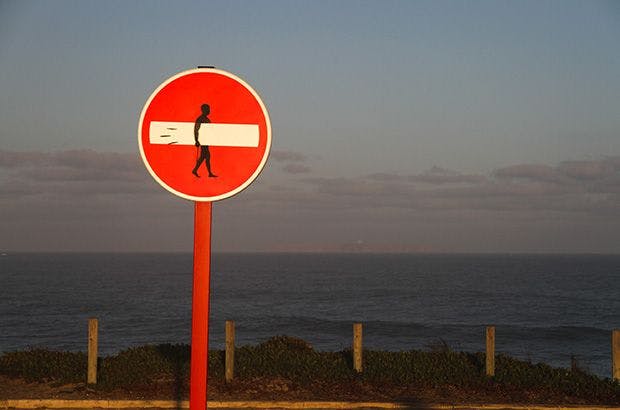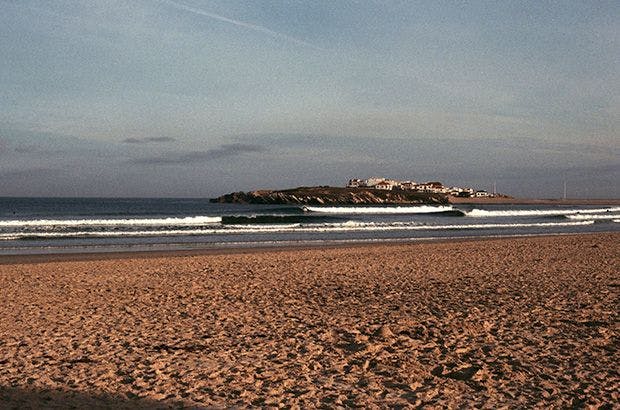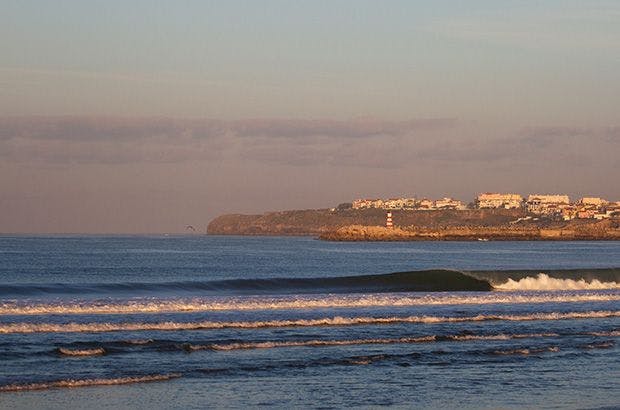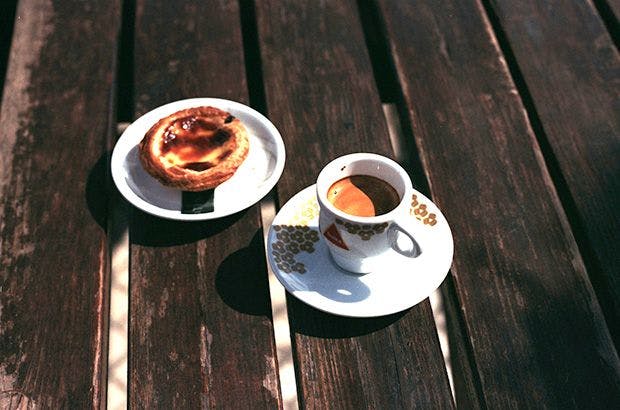TravelDeparture Gate: Peniche

As the northern hemisphere moves towards winter, European surfers move south. By October and November the last bastion of solid swell and sunshine is the west coast of Portugal, with the town of Peniche (situated an hour north of the capitol Lisbon) proving the most attractive destination.

Like an outstretched fist with its thumb raised hitching a lift along the Atlantic highway, the Peniche peninsula juts out from mid-way up the Portuguese coast into the path of any swell and promises offshore winds on one of its coasts whatever the wind direction. From the small, soft beach breaks around Baleal that provide perfect conditions for learning and improving through to the heaving barrels of the appropriately named Supertubos, there is something to satisfy every surfer here. If you then extend your range by an hour north or south to include the giants of Nazare or the reefs of Ericeira then that statement cannot be reasonably challenged.

If you didn’t surf then you might not have much cause to visit Peniche; home to one of Portugal’s biggest fishing fleets, the city is still a working port and retains a slightly grittier and more “real” atmosphere (and occasionally a fishier odour) than many nearby towns geared more towards tourism. There are no surf spots within the walls of the old town, however the beaches that connect it to the mainland catch any swell and offer a wide variety of conditions. To the north is the small and picturesque island of Baleal, a former whaling settlement of whitewashed homes and cobbled lanes that is connected to the Peniche peninsula by a sandy causeway, and beyond this the north-west facing beaches stretch away up the coast. These beaches are your best bet in the summer when swells arrive from the north and north west, or when the surf is small, and because of their size and the difficulty of access (down unpaved tracks and through fields to the top of the sandstone cliffs that back the beaches) it is relatively easy to find some solitude. Moving back south towards Peniche, there is a soft reef on the north side of Baleal known as Lagide that works best on a higher tide with southerly winds, and offers long, open walls. The beaches on either side of the causeway at Baleal offer fairly unremarkable beach break conditions that are a favourite of the local surf schools and surf camps, with size increasing as you move away from the protection of Baleal. As you move down the dune-backed stretch of beach towards Peniche (known as Baia) the size and power increases until the beach curves around again towards the old town walls. On the other side of the neck of land that connects Peniche to the mainland, surfing prospects improve again, and drastically. Nestled against the harbour wall, Molho Leste is a fast and wedgy righthander dominated by local bodyboarders that breaks in large swells. As this beach stretches south away from the harbour and the town there are several peaks of improving quality until you reach one of Europe’s best beachbreaks: Supertubos. If you visit in late October then a sure sign that you’ve found the right place will be the infrastructure for the annual WSL contest and the walkways that will expediate your run along the beach to the waves. The waves at Supertubos wrap around Penich and move out of deep water, breaking over shallow sand bars close to shore (it’s best on a higher tide) and barreling hard, held up by the prevailing northerly wind that blows cross/offshore in the summer. As a result the lefts are better, but consequently the level competition for them is higher and the standard of surfing (and bodyboarding) is incredibly high, particularly when the tour is in town.

The town with a fort on the headland visible at the south end of the Supertubos beach is Consolaçao, and there is a left and right pointbreak on either side of the fort. The left that breaks on the north side is a rarity, however with a large swell and a low tide the right hander that runs down the south side can be very good indeed.

With such a wide variety of waves appealing to surfers of almost any ability and comparatively cheap costs of living, Peniche attracts a large number of travelling surfers, particularly during the months of late autumn and early winter. Expect crowds (of beginners around Baleal and of rippers at Supertubos) when the waves are good, however if you rise before dawn then you can easily get your fair share of waves before most of the other surfers in town roll out of bed. The other factor that might tarnish your enjoyment of surfing Supertubos is the notorious smell from the fish processing factory next to the harbour at the north end of the beach (upwind), however if you really let that spoil your experience in perfect barreling beach break waves then you probably need to re-evaluate a few things. At a lot of waves in Portugal you also have to accept the fact that it is often the local bodyboarders who dominate, and adjust your perceived place as a guest in the pecking order accordingly.

If during your visit to the Peniche area an enormous swell hits the coast then, although it’s perfectly possible to find a sheltered corner where you could catch a few waves, it is well worth driving the 45 minutes or so north up to Nazare to stand in front of the lighthouse and get one of the best views going of big wave surfing. On the drive back the historic walled hill town of Obidos will tick a lot of “European history and culture” boxes, and if it doesn’t then the fairytale palaces of Sintra, just outside Lisbon (on your way back the airport?) definitely will. Portugal’s cuisine isn’t perhaps quite as famous around the world as that of Spain, France or Italy, however there is no good reason for this as you’ll eat and drink incredibly well in Portugal, and relatively cheaply – the seafood is incredible, as is the port (from the northern coastal city of Porto), and you can fuel up in between surfs on cheap coffees and the ubiquitous pastel de nata (custard tarts).
WHERE: Lisbon (LIS)
WHEN: October and November are the peak months
WHY: The beach break barrels of Supertubos, and pastel de nata
HOW: Shortboard (plus a spare)